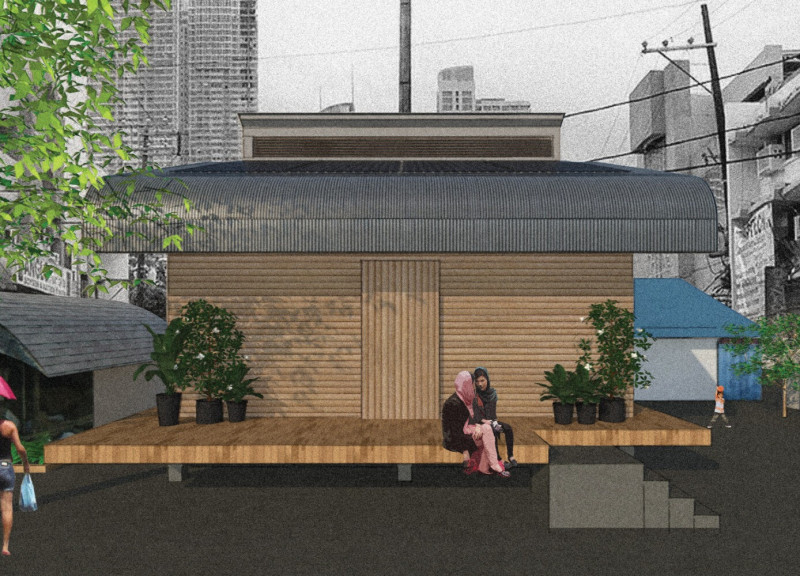5 key facts about this project
From the outset, the architecture of the project emphasizes transparency and openness. Large expanses of glass punctuate the facade, allowing abundant natural light to permeate the interior spaces. This strategic use of glass not only offers a visual connection to the outdoor environment but also promotes energy efficiency by reducing reliance on artificial lighting. The layout encourages a seamless flow between indoor and outdoor spaces, fostering a sense of community while providing areas for social interaction.
The design effectively addresses various functions, accommodating both private and communal needs. Public spaces are well-defined yet flexible, permitting a range of activities from casual gatherings to formal events. The interior arrangement prioritizes accessibility and ease of movement, with strategically placed pathways leading visitors through key areas while maintaining a sense of intimacy. Within this architectural framework, the inclusion of green spaces—such as interior courtyards or roof gardens—enhances user experience, providing tranquil retreats amidst the urban setting.
Material selection plays a pivotal role in conveying the project's character. A combination of locally sourced materials is utilized to create a sense of place, allowing the structure to blend with its environment. The use of warm-toned wood accents adds a tactile dimension to the surfaces, contrasting with the sleek, modern appeal of metals and concrete. This thoughtful choice of materials not only addresses aesthetic considerations but also reflects a commitment to sustainability and responsible sourcing.
One unique design approach evident in this project is the incorporation of passive design strategies. The building is oriented to maximize solar gain in winter while minimizing heat during the summer months. This aspect showcases a progressive understanding of climate-responsive architecture, which enhances energy efficiency and reduces the carbon footprint. The careful planning of overhangs and shading devices further demonstrates the architect's foresight in addressing environmental factors while simultaneously providing visual interest to the facade.
Lighting is another important aspect of the project. A careful balance of natural and artificial light is achieved, where light fixtures are thoughtfully integrated into the architecture, enhancing visibility while maintaining ambiance. The design considers the daily cycle of light, ensuring that spaces feel alive and welcoming at all times.
Circulation within the building reflects a conscious effort to create intuitive pathways. Key areas, such as entrances, hallways, and staircases, are designed to promote ease of navigation. This attention to flow ensures that users can move throughout the space without confusion, ultimately enhancing the overall functional experience. Moreover, the interplay between public and private zones is delicately managed; while communal areas are inviting and open, private offices or living spaces provide the necessary retreat to foster concentration and personal reflection.
The project stands as a testament to current architectural ideas that emphasize sustainability, community engagement, and thoughtful design. Residents and visitors alike benefit from a carefully curated experience that considers both functionality and the surrounding context. By merging innovative architectural strategies with practical considerations, the project redefines what it means to create a living space that is not only effective but also enriching.
For a more in-depth exploration of this project, including architectural plans, sections, and additional design insights, the reader is encouraged to delve into the project presentation. Engaging with these elements will provide a comprehensive understanding of the architectural choices made, further illustrating how design can effectively respond to the needs of users and the environment alike.


























